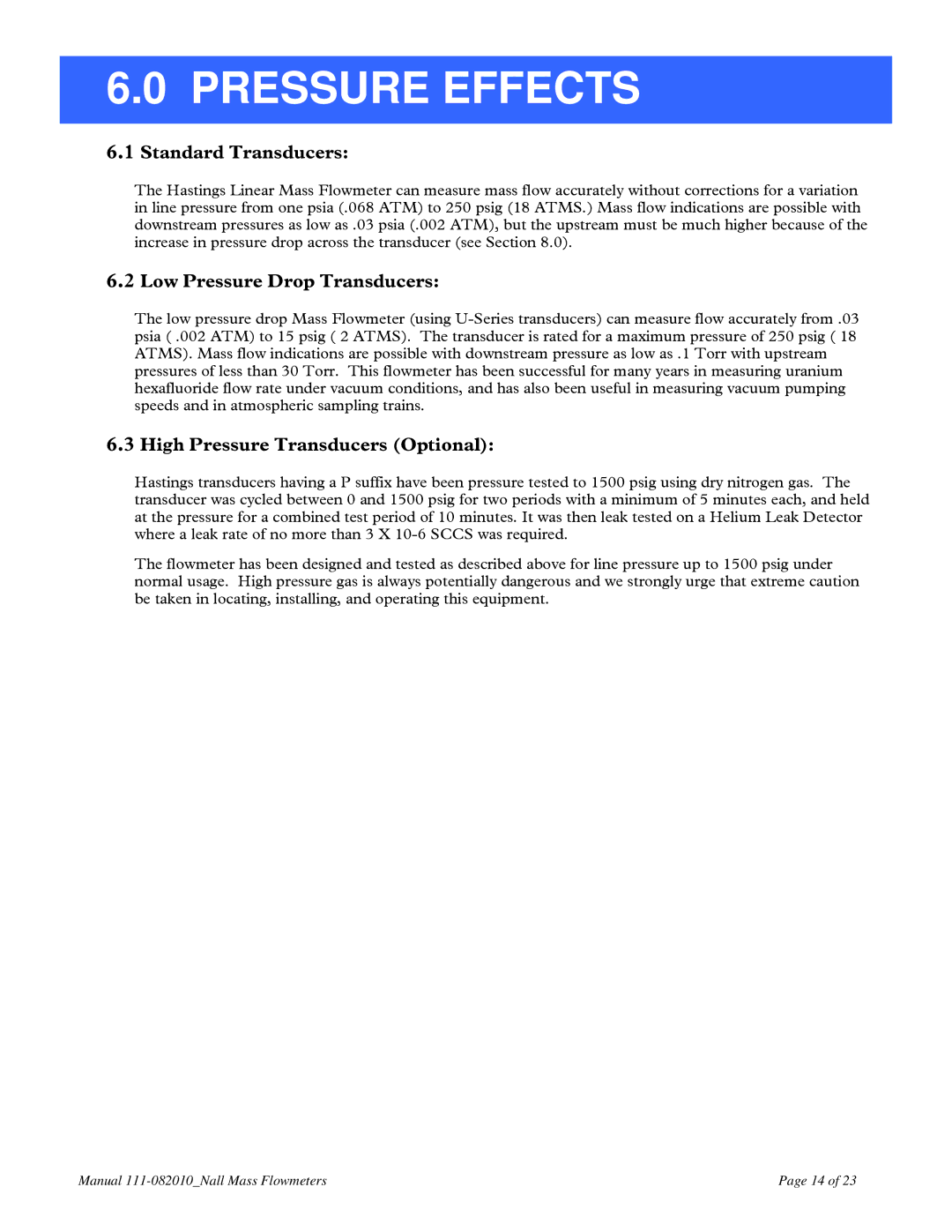
6.0PRESSURE EFFECTS
6.1Standard Transducers:
The Hastings Linear Mass Flowmeter can measure mass flow accurately without corrections for a variation in line pressure from one psia (.068 ATM) to 250 psig (18 ATMS.) Mass flow indications are possible with downstream pressures as low as .03 psia (.002 ATM), but the upstream must be much higher because of the increase in pressure drop across the transducer (see Section 8.0).
6.2Low Pressure Drop Transducers:
The low pressure drop Mass Flowmeter (using
6.3High Pressure Transducers (Optional):
Hastings transducers having a P suffix have been pressure tested to 1500 psig using dry nitrogen gas. The transducer was cycled between 0 and 1500 psig for two periods with a minimum of 5 minutes each, and held at the pressure for a combined test period of 10 minutes. It was then leak tested on a Helium Leak Detector where a leak rate of no more than 3 X
The flowmeter has been designed and tested as described above for line pressure up to 1500 psig under normal usage. High pressure gas is always potentially dangerous and we strongly urge that extreme caution be taken in locating, installing, and operating this equipment.
Manual | Page 14 of 23 |
